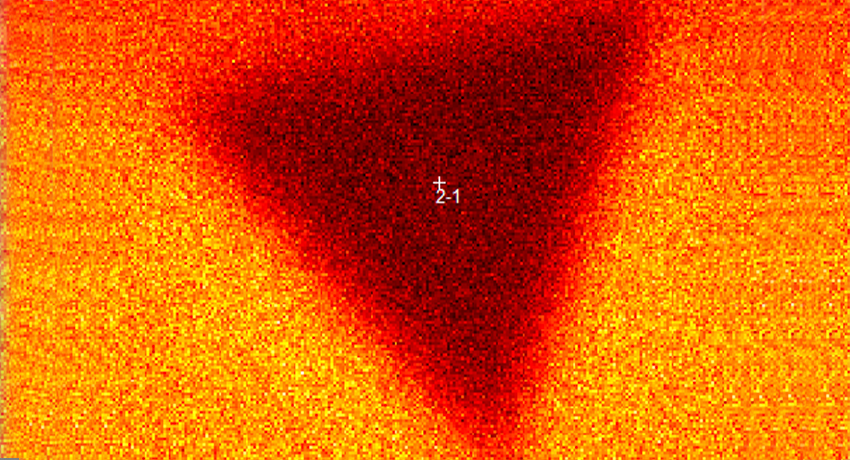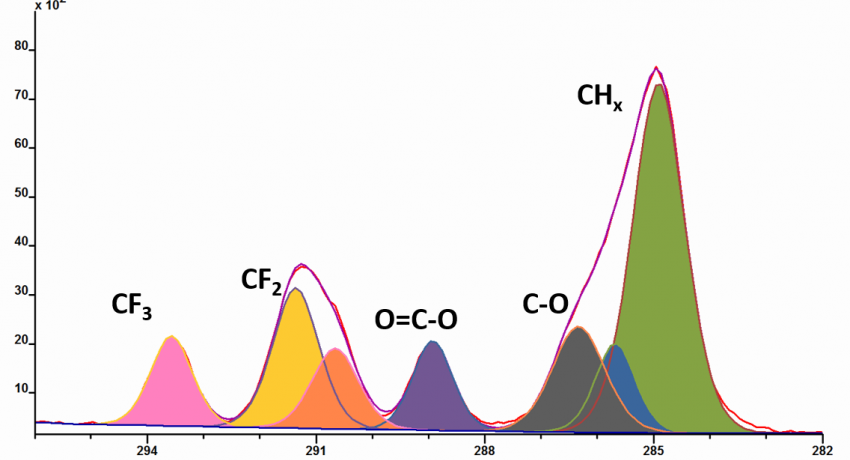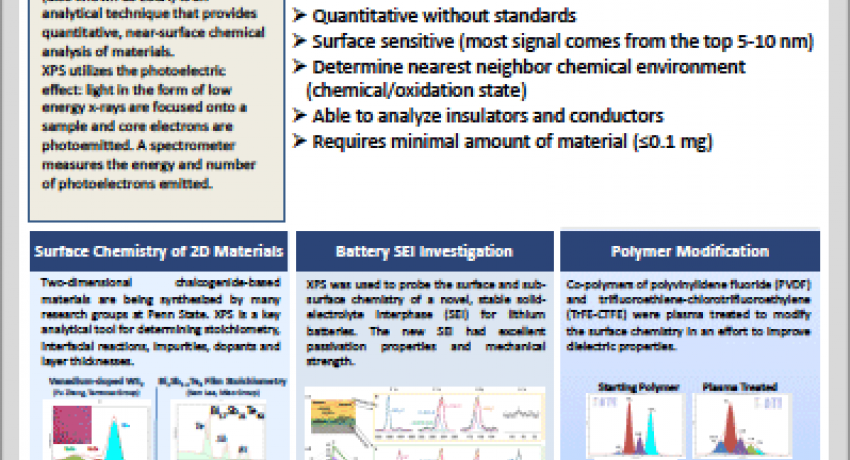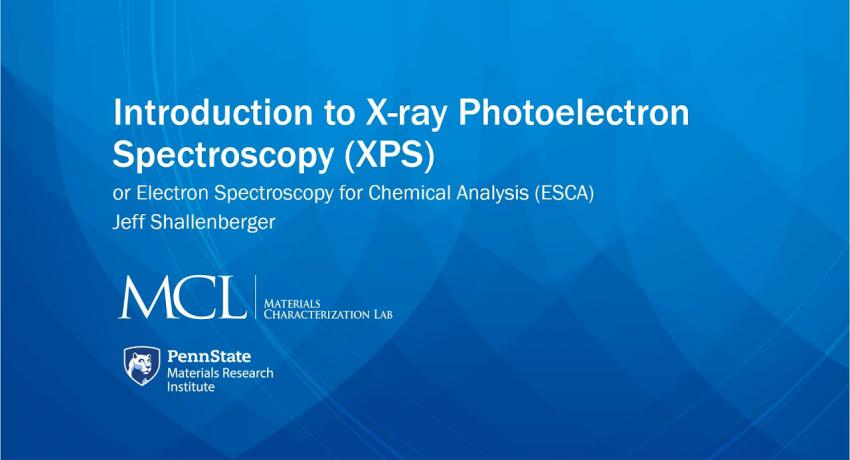X-ray Photoelectron Spectroscopy (XPS) is a technique based on the Photoelectric Effect. When a material is irradiated with x-rays, photoelectrons are subsequently ejected from atoms in the near surface. The kinetic energy of an emitted photoelectron is equal to the difference between the photon energy, and the binding energy of the electron (K.E. = hν - B.E.). The technique is inherently surface sensitive because the x-ray energy is low (<1,500 eV). The majority of the signal detected originates from the outer 1-10 nm of a sample. The spectra contain information about the elemental composition, concentrations and chemical environments (i.e. oxidation states) of surface and near surface atoms. Greater depths (up to a few microns) can be probed by coupling the technique with ion milling. Quantitative chemical state imaging is possible with some samples. The analyses are non-destructive for many, but not all materials.
Curve fit carbon spectrum from polyester/fluoroalkene copolymer
- Surface sensitive (top 1-10 nm)
- Semi-quantitative without standards
- Elemental analysis (Li-U)
- Chemical state information available for many elements
- In-depth compositional information available via Ar ion beam depth profiling
- Chemical state imaging with a lateral resolution of 10-20 microns
- Thin-films, powders, fibers, and bulk materials can be analyzed
- Sample cooling and heating from -100℃ to 500℃
- In situ fracture stage
- Separate glove box and inert sample transfer for air-sensitive sample introduction




